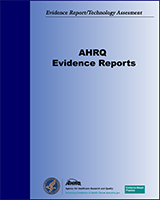NCBI Bookshelf. A service of the National Library of Medicine, National Institutes of Health.
Wilt TJ, Shaukat A, Shamliyan T, et al. Lactose Intolerance and Health. Rockville (MD): Agency for Healthcare Research and Quality (US); 2010 Feb. (Evidence Reports/Technology Assessments, No. 192.)
This publication is provided for historical reference only and the information may be out of date.
Appendix Table D2Association between low dairy Ca++ intake and bone fractures
| Study | Comparison | Outcome | Estimate | Mean (95% CI) |
|---|---|---|---|---|
| Goulding, 200437 Country: New Zealand Prepubertal children with a history of long-term milk avoidance Ca++ intake difference in comparison groups: NR/NR | Calcium intake below 300 mg/day vs. >300mg/day | History of fracture | Crude OR | 1.26 (0.34; 4.65) |
| Looker, 199343 Country: USA Men and postmenopausal women Ca++ intake difference in comparison groups: NR/Y | Selected calcium cut points (mg~day) <400 vs. >1,000 in men | History of fracture | Adjusted for alcohol use, smoking, physical activity, BMI, and postmenopausal hormone use in the total sample of women in addition to age RR | 0.51 (0.20; 1.10) |
| Selected calcium cut points (mg~day) <400 vs. >1,000 in women | 0.91 (0.50; 1.60) | |||
| Selected calcium cut points (mg~day) <400 vs., >1,000 in late menopausal women | 0.73 (0.30; 1.60) | |||
| Tavani, 199549 Country: Italy Postmenopausal women Ca++ intake difference in comparison groups: NR/NR | Ca++ intake >1,026mg/day vs. <443mg/day | Hip fracture | Adjusted for age, education, smoking status, total alcohol consumption, and estrogen replacement therapy OR | 1.20 (0.80; 2.00) |
- Appendix Table D2, Association between low dairy Ca++ intake and bone fractures ...Appendix Table D2, Association between low dairy Ca++ intake and bone fractures - Lactose Intolerance and Health
- MOB kinase activator 3C isoform X1 [Mus musculus]MOB kinase activator 3C isoform X1 [Mus musculus]gi|1907153743|ref|XP_036019447.1|Protein
Your browsing activity is empty.
Activity recording is turned off.
See more...
